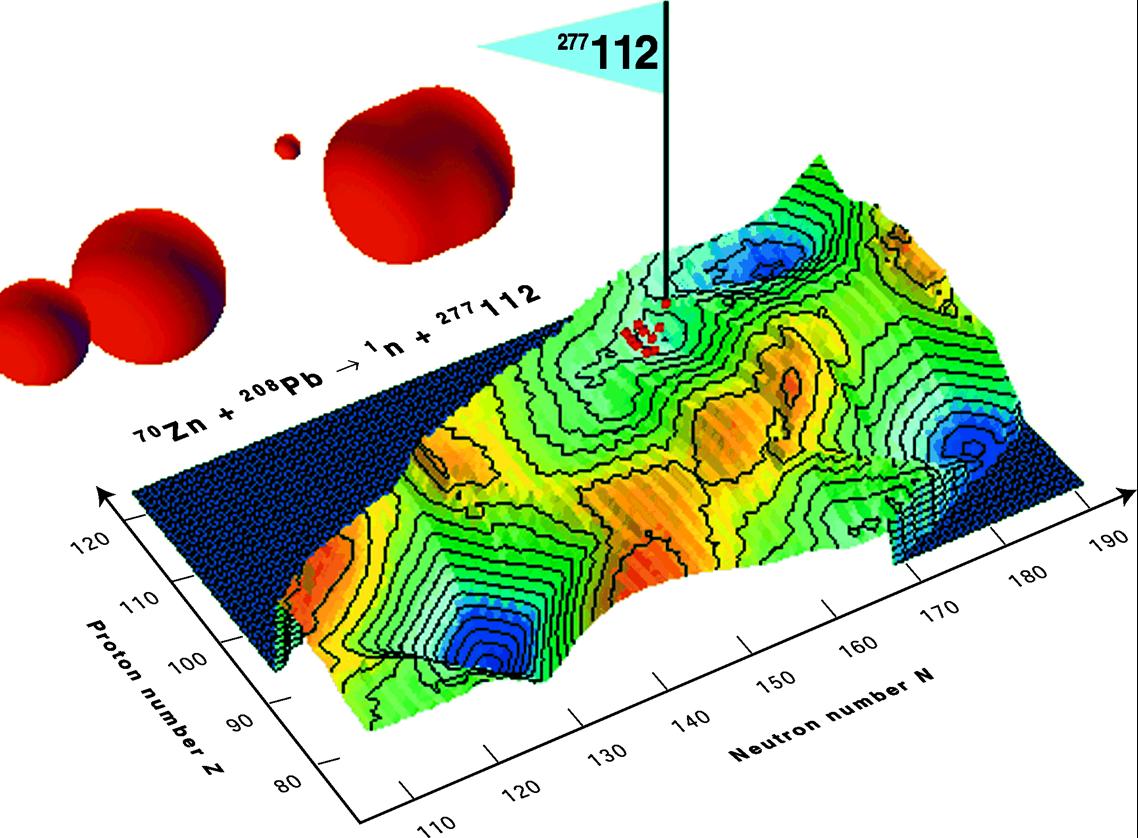
| Nuclear Physics Group |
Physics Department
Conferences
Seminars
Useful Links
IT Resources
Feedback:
support@ns.ph.liv.ac.uk
Superheavy Nuclei

The heaviest stable nucleus is 209Bi83. The heaviest naturally occurring isotope with a half life of the order of the age of the solar system is 238U92. A simple calculation using the liquid drop model of the nucleus shows that if a nucleus contains more than roughly a hundred protons the resulting Coulomb forces are sufficient to tear it apart. But if the quantum nature of the nucleons is taken into account in the shell model, one of the long standing predictions is that the binding energies can be increased enough to yield significant half lives for nuclei containing well over a hundred protons. As yet, the various mean field theories give very different predictions when extrapolated to nuclei beyond 238U and one goal of current research is to increase our experimental knowledge of very heavy nuclei. Our group plays a central role in an international research programme studying in-beam and decay spectroscopy on very heavy nuclei such as 254No, with 102 protons, and its neighbours. The small production cross section allows the creation of these nuclei at a rate of several per hour which is enough to establish their structure in in-beam experiments using a powerful combination of target spectrometers and recoil separators to filter the compound nucleus from the huge background of fission products. Several such experiments have been performed at the Argonne National Laboratory, USA, using the Fragment Mass Analyser, and in Jyväskylä, Finland, using the gas filled separator RITU. So far the nuclides 252, 253, 254No, 250Fm and 255Lr have been studied. The cross sections for the reactions range from 2µb down to 200nb. One major result is the confirmation of the expected strong deformation of nuclei in this region with a maximum at the neutron number N=152. The deduced deformation parameters are comparable to those in the well-deformed rare earth region. The SACRED electron spectrometer designed by the Liverpool group, used in conjunction with the recoil separator RITU in Jyväskylä, will be used to study odd-mass nuclei in-beam. For these nuclei most of the low-lying transitions proceed through highly converted M1 transitions, emitting conversion electrons rather than gamma rays. Another major advance in these studies will come from the use of the GREAT spectrometer, a highly sensitive instrument designed to observe the decay of radioactive products (alpha particles, protons, conversion electrons, x-rays and gamma-rays) at the focal plane of recoil separators such as RITU. The use of this spectrometer will allow measurements be made of low-lying states in even-even and odd mass superheavy nuclei, as well as measurements of long-lived high-K states that hold the key to the structure of superheavy nuclei. |
Highlights of Recent Results
Click on the green buttons to follow the links.

|
Spectroscopy of Superheavy Elements (Review Article) |

|
Spectroscopy of 254-Nobelium |

|
Research carried out at Jurosphere |
| © University of Liverpool | Disclaimer. | |